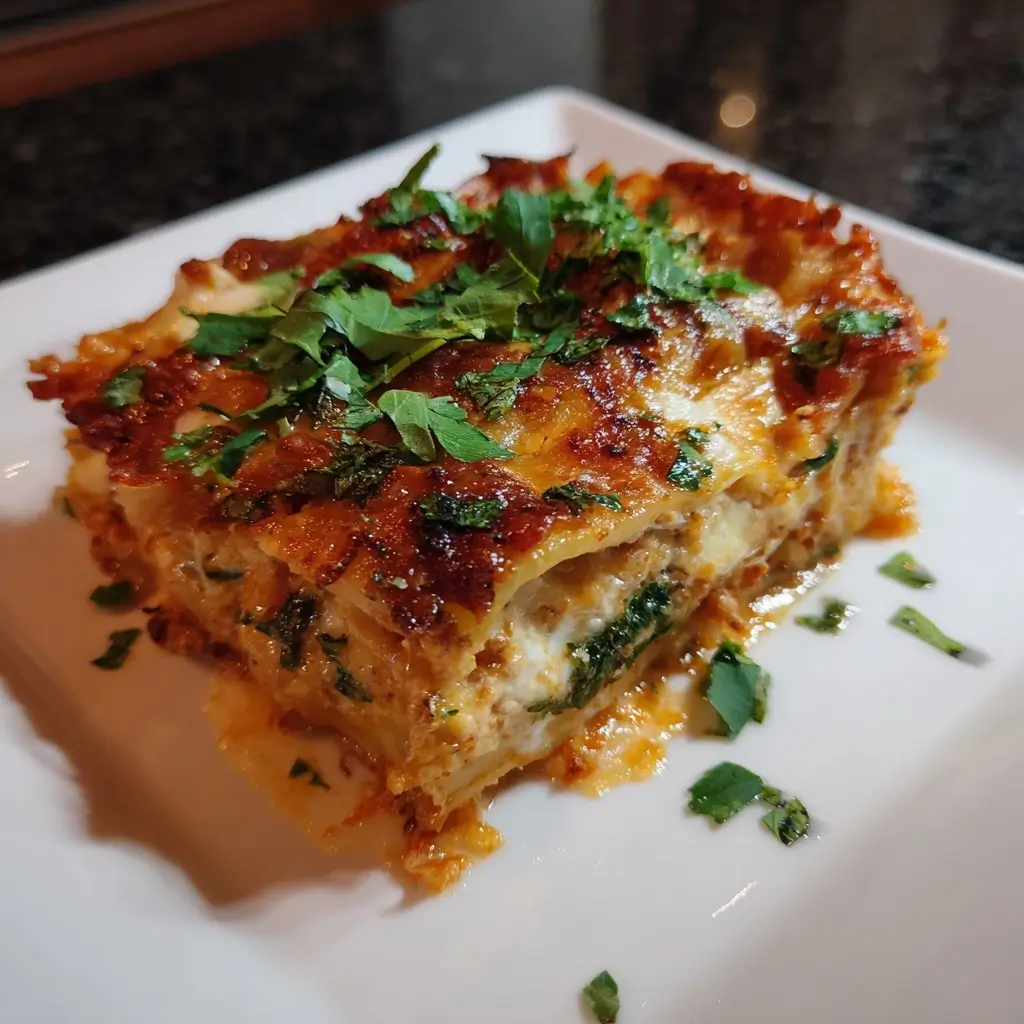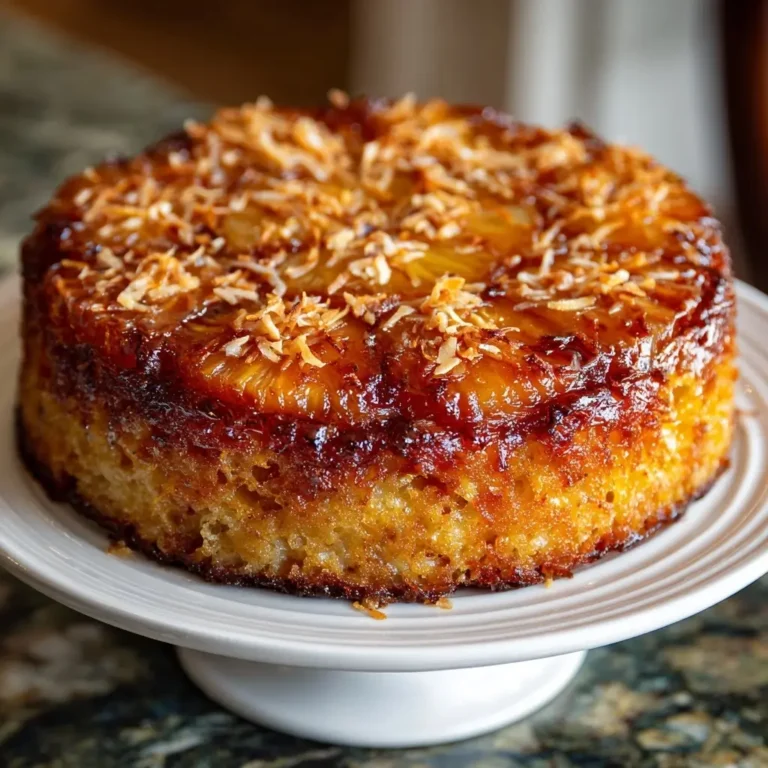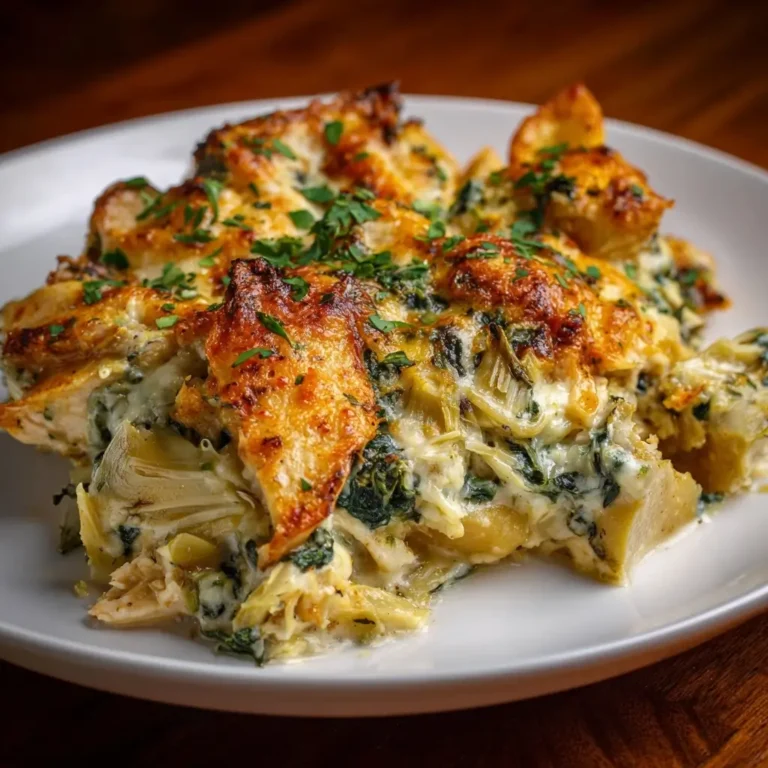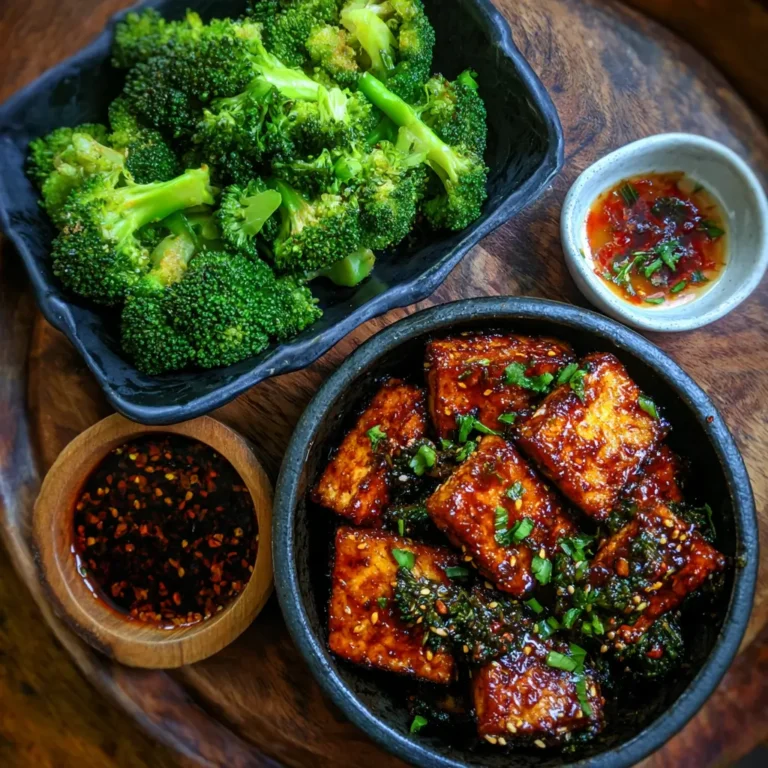Creamy Tomato Lasagna Florentine
Creamy Tomato Lasagna Florentine: A Luxurious Twist on a Classic Comfort Dish
If you’re craving a comforting, hearty meal that blends the rich tradition of Italian cuisine with creamy indulgence and vibrant greens, look no further than Creamy Tomato Lasagna Florentine. This elevated version of classic lasagna layers tender pasta sheets with a velvety tomato-cream sauce, sautéed spinach, and a trio of cheeses to create a dish that’s both satisfying and sophisticated. Whether it’s for a cozy family dinner or an impressive centerpiece for a weekend gathering, this lasagna delivers bold flavors and luxurious textures in every bite.
The History of Lasagna and the Florentine Influence
Lasagna is one of the oldest forms of pasta, with roots stretching back to ancient Greece and Rome. The word “lasagna” likely derives from the Greek word *laganon*, meaning a flat sheet of pasta. Over centuries, the dish evolved across Italy, particularly in regions like Emilia-Romagna and Naples, where layered baked pastas became culinary staples.
The addition of “Florentine” to a recipe typically indicates the inclusion of spinach—named after Florence, Italy (*Firenze* in Italian), a city renowned for its art, architecture, and rich culinary traditions. Spinach was said to have been introduced to Italy by Queen Catherine de’ Medici, who brought it from France. Dishes prepared “à la Florentine” honor her legacy by featuring this leafy green as a star ingredient.
Creamy Tomato Lasagna Florentine is a modern fusion that marries traditional Italian layering techniques with creamy sauces and fresh vegetables. While not a historical recipe per se, it reflects contemporary tastes that favor richer textures and bolder flavor combinations, making it a popular variation in American-Italian and fusion kitchens worldwide.
Ingredients Breakdown: What Makes This Lasagna So Special?
The magic of Creamy Tomato Lasagna Florentine lies in its balance of ingredients—each component plays a vital role in building flavor, texture, and visual appeal. Here’s a detailed breakdown:
- Lasagna Noodles: Use oven-ready (no-boil) noodles for convenience, or traditional lasagna sheets if you prefer a more hands-on approach. Whole wheat or gluten-free options can be substituted based on dietary needs.
- Tomato Sauce: A high-quality marinara or crushed tomatoes form the base. Opt for fire-roasted tomatoes for a deeper, smoky sweetness.
- Heavy Cream or Half-and-Half: Adds richness and smoothness to the sauce, balancing the acidity of the tomatoes.
- Fresh Spinach: Baby spinach is ideal—tender, mild, and quick-cooking. It adds color, nutrients, and earthy depth.
- Ricotta Cheese: Provides a light, creamy layer with a slightly grainy texture that holds up well when baked.
- Mozzarella Cheese: Melts beautifully, creating gooey, golden layers throughout the lasagna.
- Parmesan Cheese: Adds a sharp, salty umami kick that enhances all other flavors.
- Egg: Helps bind the ricotta mixture so it doesn’t separate during baking.
- Garlic and Onion: Sautéed to build aromatic depth in both the tomato-cream sauce and spinach filling.
- Olive Oil and Butter: Used for sautéing; olive oil brings fruitiness, while butter adds richness.
- Herbs: Fresh basil, dried oregano, and a pinch of red pepper flakes round out the flavor profile.
- Salt and Black Pepper: Essential for seasoning each layer properly.
Step-by-Step Recipe: How to Make Creamy Tomato Lasagna Florentine
Follow these detailed steps to create a perfectly layered, bubbling-hot lasagna that will impress even the pickiest eaters.
Preparation Time:
30 minutes | Cooking Time: 50 minutes | Total Time: 1 hour 20 minutes (+ 15 min resting) | Servings: 8–10
Ingredients
- 12 oven-ready lasagna noodles (or boiled lasagna sheets)
- 2 tablespoons olive oil
- 1 medium yellow onion, finely diced
- 4 cloves garlic, minced
- 1 (28-ounce) can crushed tomatoes (preferably fire-roasted)
- 1 (15-ounce) can tomato sauce
- 1 cup heavy cream (or half-and-half for a lighter version)
- 1 teaspoon dried oregano
- 1 teaspoon dried basil
- ½ teaspoon red pepper flakes (optional)
- Salt and freshly ground black pepper, to taste
- 1 (10-ounce) package frozen chopped spinach, thawed and drained, OR 5 cups fresh baby spinach
- 2 cups whole-milk ricotta cheese
- 1 large egg
- 1 cup grated Parmesan cheese, divided
- 3 cups shredded mozzarella cheese, divided
- ¼ cup fresh basil, thinly sliced (chiffonade)
- 1 tablespoon unsalted butter (optional, for topping)
Directions
- Preheat Oven: Preheat your oven to 375°F (190°C). Lightly grease a 9×13-inch baking dish with non-stick spray or olive oil.
- Prepare the Creamy Tomato Sauce: In a large saucepan over medium heat, warm the olive oil. Add the diced onion and sauté until translucent (about 5 minutes). Stir in the garlic and cook for another 30 seconds until fragrant. Add the crushed tomatoes, tomato sauce, heavy cream, oregano, dried basil, red pepper flakes, salt, and pepper. Bring to a gentle simmer and cook for 15–20 minutes, stirring occasionally, allowing the sauce to thicken slightly. Remove from heat and set aside.
- Cook the Spinach: If using fresh spinach, heat 1 tablespoon of olive oil in a large skillet over medium heat. Add spinach in batches, stirring until wilted. Press out excess moisture using a fine mesh strainer or cheesecloth. If using frozen spinach, ensure it’s fully thawed and squeezed dry to remove all liquid—this prevents a watery lasagna.
- Make the Ricotta Mixture: In a medium bowl, combine the ricotta cheese, egg, ½ cup of Parmesan cheese, 1 cup of mozzarella, fresh basil, a pinch of salt, and a dash of black pepper. Mix until smooth and well blended. Fold in the cooked spinach until evenly distributed.
- Assemble the Lasagna: Spread about ¾ cup of the creamy tomato sauce evenly across the bottom of the prepared baking dish. Place 4 lasagna noodles over the sauce, slightly overlapping if necessary. Spread one-third of the ricotta-spinach mixture over the noodles. Sprinkle with ½ cup of mozzarella and a generous pinch of Parmesan.
- Repeat Layers: Add another ¾ cup of sauce, followed by 4 more noodles, another third of the ricotta mixture, and more cheese. Repeat once more to create three full layers. Top the final layer of noodles with the remaining sauce, then sprinkle the rest of the mozzarella and Parmesan over the top. For a golden crust, dot the surface with small pieces of butter.
- Bake: Cover the dish loosely with aluminum foil (tent it slightly to prevent cheese from sticking). Bake for 30 minutes. Remove the foil and bake for an additional 15–20 minutes, or until the top is bubbly and lightly browned.
- Rest Before Serving: Let the lasagna rest for at least 15 minutes before slicing. This allows the layers to set and makes for cleaner cuts.
- Garnish and Serve: Sprinkle with fresh basil and extra Parmesan. Serve warm with a side salad, garlic bread, or roasted vegetables.
Tips for the Perfect Creamy Tomato Lasagna Florentine
- Prevent Soggy Lasagna: Always squeeze spinach thoroughly. Excess moisture is the number-one cause of a runny lasagna.
- No-Boil Noodles Tip: Ensure enough sauce surrounds each noodle layer so they absorb liquid and cook properly. You can add ¼ cup of water around the edges before baking if needed.
- Use Full-Fat Dairy: Low-fat ricotta or mozzarella may result in a less creamy texture. For best results, stick to whole-milk cheeses.
- Season Every Layer: Don’t rely on just the sauce—lightly season each ricotta layer with salt and pepper for balanced flavor.
- Browning the Top: If the top isn’t browning to your liking, switch to broil for the last 2–3 minutes—but watch closely to avoid burning.
- Make Ahead: Assemble the lasagna up to 24 hours in advance and refrigerate. Add 10–15 minutes to baking time if starting cold.
- Freezing Option: Fully assemble and freeze unbaked lasagna for up to 3 months. Thaw overnight in the fridge before baking.
Variations and Customizations
This recipe is highly adaptable to suit different tastes, diets, and pantries:
- Meat Lovers: Brown ½ pound of Italian sausage, ground beef, or turkey and layer it into the sauce for a heartier version.
- Vegan Option: Substitute plant-based ricotta (cashew or tofu-based), vegan mozzarella, and omit the egg. Use coconut cream instead of dairy cream.
- Gluten-Free: Use certified gluten-free lasagna noodles. Brands like Barilla and Jovial offer excellent oven-ready GF versions.
- Keto-Friendly: Replace noodles with thinly sliced zucchini or eggplant. Reduce tomato content and increase cream for lower carbs.
- Add Mushrooms: Sautéed cremini or shiitake mushrooms add an earthy umami boost.
- Dairy-Free Cream Sauce: Blend soaked cashews with vegetable broth and nutritional yeast for a rich, creamy alternative.
- Extra Greens: Mix in chopped kale, arugula, or Swiss chard with the spinach for added nutrition.
- Spicy Kick: Add diced jalapeños or extra red pepper flakes to the ricotta mixture.
- Seafood Twist: Incorporate flaked cooked salmon or crab meat into the ricotta layer for a luxurious variation.
Health Considerations and Nutritional Value
Creamy Tomato Lasagna Florentine is undeniably rich, but with mindful modifications, it can fit into a balanced diet.
Nutritional Highlights (per serving, approx. 1/10 of recipe):
- Calories: ~420–480
- Protein: 20–25g (from cheese and egg)
- Fat: 25–30g (mostly from dairy; includes healthy monounsaturated fats from olive oil)
- Carbohydrates: 30–35g (mainly from pasta and tomatoes)
- Fiber: 4–5g (thanks to tomatoes and spinach)
- Vitamins & Minerals: High in calcium, vitamin A, vitamin K, iron, and folate from spinach; lycopene from tomatoes.
Health Tips:
- Reduce Sodium: Use low-sodium tomato products and limit added salt, especially if using store-bought sauce.
- Lower Fat: Substitute part-skim ricotta, reduced-fat mozzarella, and half-and-half instead of heavy cream.
- Boost Fiber: Use whole-grain or legume-based lasagna noodles.
- Portion Control: Serve with a large green salad to increase volume without excess calories.
- Omega-3s: Add flaxseed or walnuts to the ricotta mixture for a plant-based omega-3 boost.
Frequently Asked Questions (FAQ)
Can I make this lasagna ahead of time?
Yes! Assemble it up to 24 hours in advance and refrigerate. You may need to add 10–15 minutes to the baking time. You can also freeze the unbaked lasagna for up to 3 months—thaw in the refrigerator before baking.
Why is my lasagna watery?
This usually happens due to excess moisture in the spinach or using low-fat cheeses that release water when heated. Always squeeze spinach dry and use full-fat dairy for best results.
Can I use fresh tomatoes instead of canned?
Yes, but you’ll need to peel, seed, and cook down about 6–8 ripe tomatoes to yield enough sauce. Canned tomatoes are often preferred for their consistent flavor and convenience.
Is it safe to reheat lasagna?
Absolutely. Reheat individual portions in the microwave or cover the entire dish with foil and warm in a 350°F oven until heated through (about 20–25 minutes).
Can I make this without eggs?
Yes. Omit the egg from the ricotta mixture—it helps bind but isn’t essential. For a vegan version, use a flax egg (1 tbsp ground flax + 3 tbsp water) or cornstarch slurry.
What’s the best way to slice lasagna neatly?
Use a sharp chef’s knife and wipe it clean between cuts. Letting the lasagna rest for 15 minutes after baking is crucial for clean slices.
Can I use cottage cheese instead of ricotta?
Yes, though the texture will be lighter and slightly tangier. Blending cottage cheese ensures a smoother consistency.
How long does leftover lasagna last?
Store in an airtight container in the refrigerator for up to 4 days. Freeze for longer storage (up to 3 months).
Summary
Creamy Tomato Lasagna Florentine is a decadent, flavor-packed evolution of traditional lasagna, combining luscious tomato-cream sauce, garlicky spinach, and a trio of cheeses in perfect harmony. Baked to golden perfection, it’s a show-stopping dish that satisfies comfort food cravings while offering room for creativity and customization.






